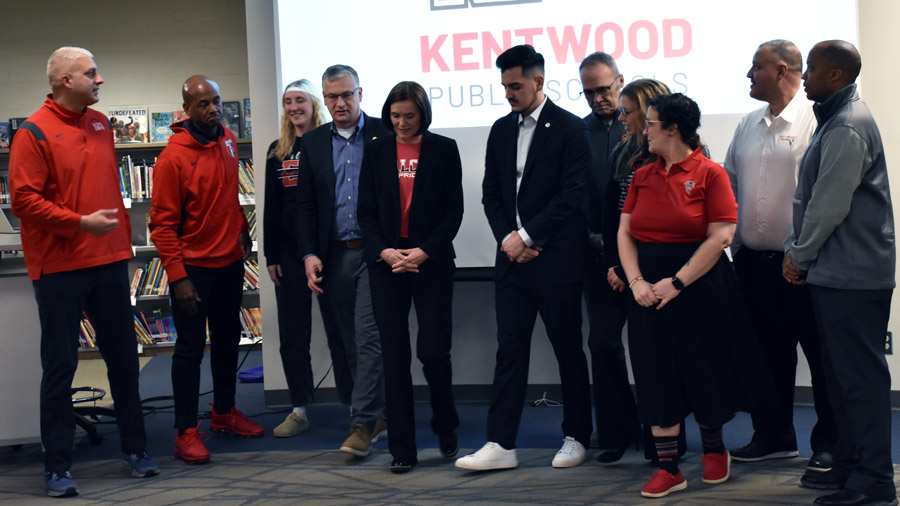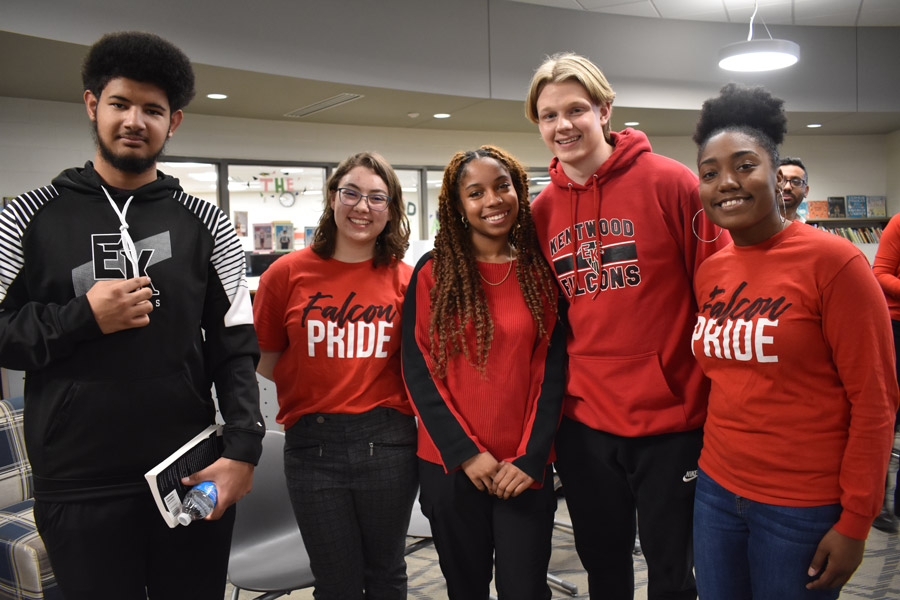Kentwood — East Kentwood High School science teacher Carl Warfield said it pains him when former students come back to visit and say they would have really liked to have taken his class, but graduation requirements prevented it. His colleagues feel the same, he said.
“I can’t even tell you how many students would really love to take a class, but there’s just only so many years and so much time,” Warfield said. “That is the big thing I really want to impress upon you all … is that we’ve got to find a way to get some more flex in here so students can take more courses and things that are geared toward what they really want to do.”
Warfield’s voice was one of several in the district heard recently by state legislators who stopped at Kentwood’s Brookwood Elementary School on March 30 as part of a statewide education tour. The tour is aimed at gaining insight from a range of Michigan educators and incorporating the feedback into the upcoming state budget.
The discussions are timely, since the budget conversation is picking up in Lansing, said Chris Glass, Kent ISD assistant superintendent of legislative and organizational initiatives.

“It is important that our legislature leaders are able to see and understand the challenges and opportunities within our schools,” Glass said. “They have an obligation to make sure we have adequate funds, that we have appropriate policies in place so our educators can be their best selves and our students can thrive.”
Attending the roundtable discussion were Senate Majority Leader Winnie Brinks, whose district includes Kentwood; and Assistant Majority Leader Darrin Camilleri, chair of the Senate Appropriations Subcommittee on Pre-K-12 Education.
Educators included several Kentwood teachers, Superintendent Kevin Polston, Rockford Superintendent Steven Matthews and Caledonia Superintendent Dedrick Martin. Also in attendance was State Rep. Phil Skaggs, whose district includes the city of Kentwood.
“It is important that our legislature leaders are able to see and understand the challenges and opportunities within our schools. They have an obligation to make sure we have adequate funds, that we have appropriate policies in place so our educators can be their best selves and our students can thrive.”
— Chris Glass, Kent ISD assistant superintendent of legislative and organizational initiatives
Before the roundtable, legislators met with five East Kentwood High School students, who presented topics they thought the state needed to consider when planning for a budget.
Senior Dewaynia English said she enjoyed hearing the different voices, learning about the budget process and sharing her thoughts on what she saw as needs within local schools.
“It was interesting having the discussion with the students with the senators, and then coming in here and hearing the teachers’ things and how we both recognize that safety is an issue that has to be solved, and our teachers are trying to figure out something about that,” Dewaynia said.

Building a Teacher Pipeline
“A lot of the topics I think definitely overlapped,” said senior Sophie Gemmen, who added there has been much discussion about student teachers and alumni coming to teach.
“To foster that community is important to me,” Sophie said.
Districts in Kent County have come together to support campaigns to encourage alumni to return to the classrooms to teach, noted Polston. This is the first year the state has paid student teachers $9,600 to fulfill their student teaching requirement.
East Kentwood math teacher Molly Mosketti said she felt the most at home when she felt supported by administration and the district, knowing that it was OK to make mistakes and to ask for help.
“At Kentwood, we have instructional coaches who work specifically with our new teachers, and we have veteran teachers who participate in ongoing professional development,” Mosketti said. “I know I can go to my superintendent (and) my principal, and talk to them about things that I need in my classroom, and they’re going to try to see if they can help get those things for me.
“I think strong community interest is something that needs to be celebrated and fostered.”
Diversity in Schools
For senior Amira Hamilton, diversity is important and she thinks it should be acknowledged and celebrated.
Being the most diverse in the state means district teachers are responsible for making sure every child and family has equitable education, said Kerianne Leja, Brookwood Elementary multilingual learner teacher.
“The model is shifting,” said Leja, who noted that in Kentwood every building has multilingual learner teachers to work staff and students.
“We’re working on piloting a kind of a co-teaching piece that we are going to be collaborating (on) with teachers, because that is one of the most important pieces. Every gen ed teacher needs to also have that background so they’re reaching all of our students…. but it is exciting to see that funding being put into students, because that is who we are.”

Support for Teachers and Students
Senior Connor Shaw said he brought up student support when talking to the legislators, and he was happy to hear the panel also brought it up.
To him, that means “making sure there is support there for both the students and the teachers as far as mental health and making sure all the resources that could possibly be for students are there, considering that the only place students spend more time at than their home is at school.”
Leja said teachers have been asking for years for support such as counselors and social workers, and that it feels to her that with the current state legislature their voices are being heard.
Another area of support is proving professional development that helps to grow culturally responsive teaching, said art teacher Olivia Miller. Recognizing that topics look different across varying cultures and working to bridge that gap through collaboration and building it into the curriculum is important, Miller said.
“Kids can’t learn if we don’t teach to their culture, because that’s part of them,” she said. “So if you really want them to connect and create that lifelong learning, you have to teach to their core, and the core is their culture.”












